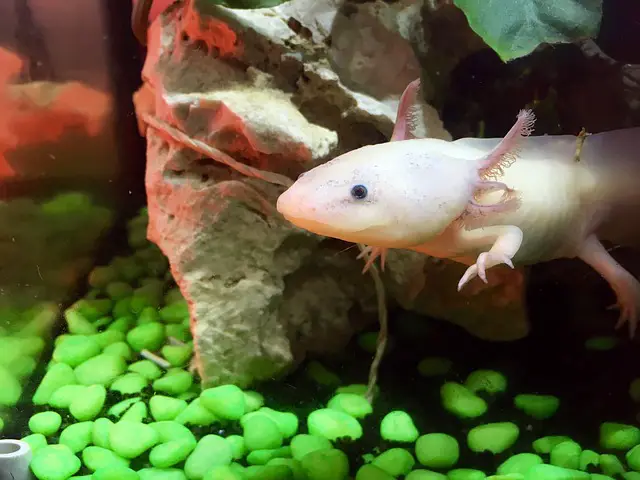Axolotls are a species of salamander that can regenerate their limbs. They are a popular pet, but what should you do if your axolotl dies? In this blog post, we will discuss the options available to you when your axolotl passes away.
Introduction
While it’s certainly sad to lose a pet, it’s important to know how to properly dispose of the body. If you’re not sure what to do with a dead axolotl, you’ve come to the right place.
The first step is to wrap the axolotl in a clean cloth or paper towel. This will help to contain any fluids and prevent them from coming into contact with other surfaces.
Once the axolotl is wrapped, it can be placed in a plastic bag and sealed.
Then, put the bag in the freezer until you’re ready to dispose of it. When it’s time to say goodbye, you can bury the axolotl in your backyard or take it to a pet cemetery.
Either way, giving your pet a proper burial is a dignified way to honor their memory.
Will dead axolotls carry diseases?
The answer is most likely yes. When an animal dies, its body starts to decompose. This process is caused by bacteria and other microbes that invade the body and break down its tissues.
As these microbes multiply, they release toxins that can be harmful to other animals. In addition, the decomposing body can also attract scavengers, such as rats and birds, which can spread disease.
For all these reasons, it is best to avoid contact with dead animals. If you must handle a dead axolotl, make sure to wear gloves and wash your hands thoroughly afterward.
What to do with a dead axolotl?
– Option One: Burial
Burial is often the best option for disposing of a dead axolotl. If you have access to a backyard, you can dig a small hole and bury the axolotl there. If you live in an apartment or do not have access to a backyard, you can place the axolotl in a plastic bag and bury it in a nearby park.
Be sure to check with your local authorities before doing this, as some parks do not allow burial. Once the axolotl is buried, you can plant a tree or flower over the grave to mark the spot.
– Option Two: Taxidermy
One option for what to do with a dead axolotl is taxidermy. Taxidermy is the process of preserving an animal’s body by stuffing it with stuffing material and then sewing it back up. The animal’s skin is then put on top of the stuffed body.
This option is a good idea if you want to be able to keep the axolotl for a long time and if you want it to look like it did when it was alive. The downside of this option is that it can be expensive and it can be difficult to find someone who knows how to do taxidermy.
– Option Three: Cremation
When an axolotl dies, there are a few things you can do with the carcass. One option is to simply bury it in the ground. This is a good option if you have a garden and want to help fertilize the soil. Another option is to cremate the axolotl. This involves placing the body in a cremation chamber and subjecting it to high temperatures.
Cremation is a more expensive option, but it allows you to keep the axolotl’s ashes if you so desire. A third option is to taxidermy the axolotl. This involves preserving the body through a process of preserving and stuffing it.
Taxidermy is a more expensive and time-consuming option, but it can allow you to keep the axolotl as a pet even after death. Ultimately, the decision of what to do with a dead axolotl depends on your personal preference and circumstances.
Conclusion
It’s always tragic when a pet axolotl dies. These unique creatures have captivated the hearts of many, and their loss can leave a big hole in our lives. But what do you do with a dead axolotl?
There are two main options: burial and cremation. Both have their pros and cons. Burial is generally less expensive and easier to do, but it can be difficult to find a place to bury an axolotl if you live in an urban area. Cremation is more expensive but gives you the option to keep your axolotl’s ashes if you wish.
Ultimately, the decision of what to do with a dead axolotl is a personal one. There is no right or wrong answer. Consider your own circumstances and make the choice that feels best for you and your family.




